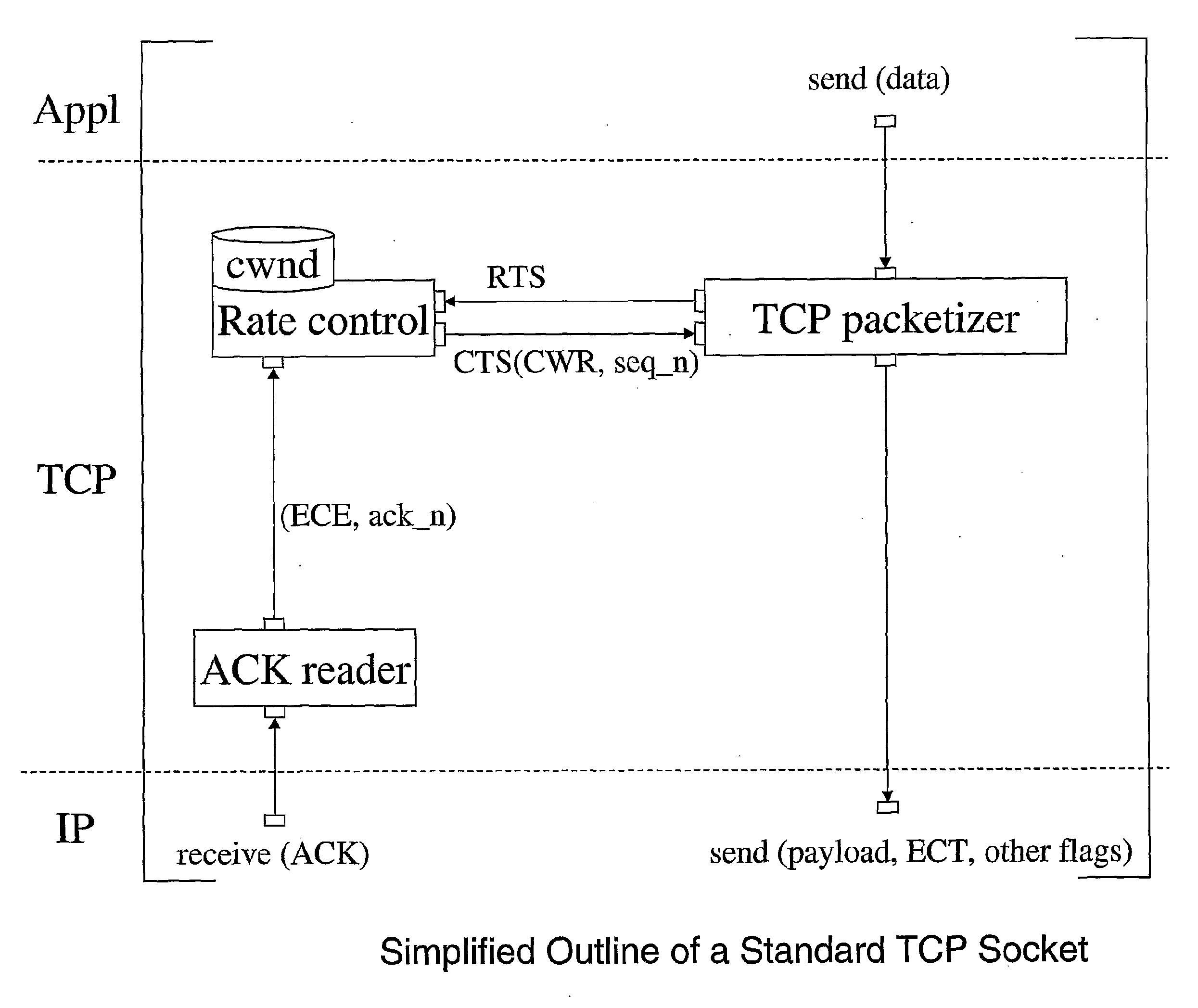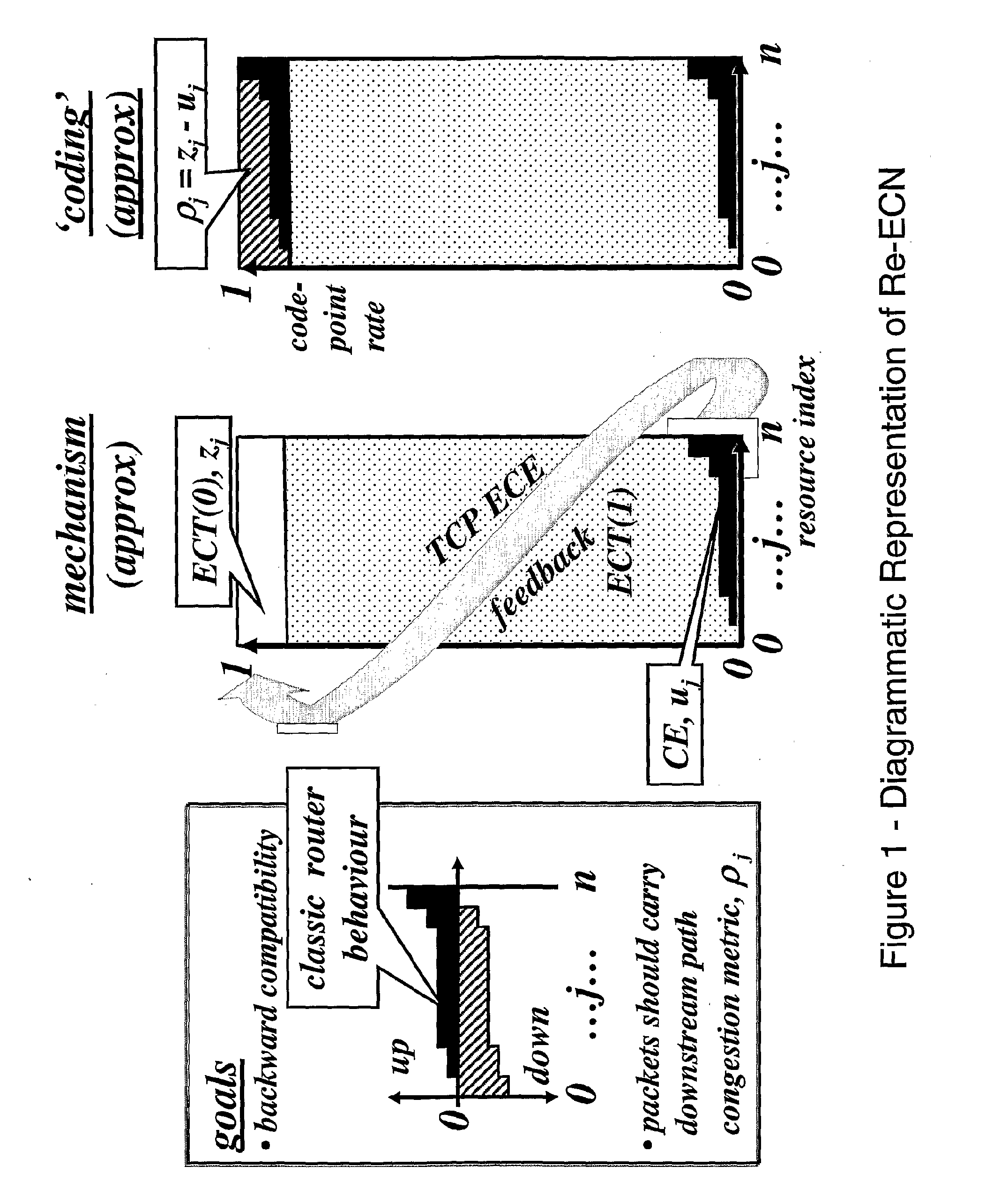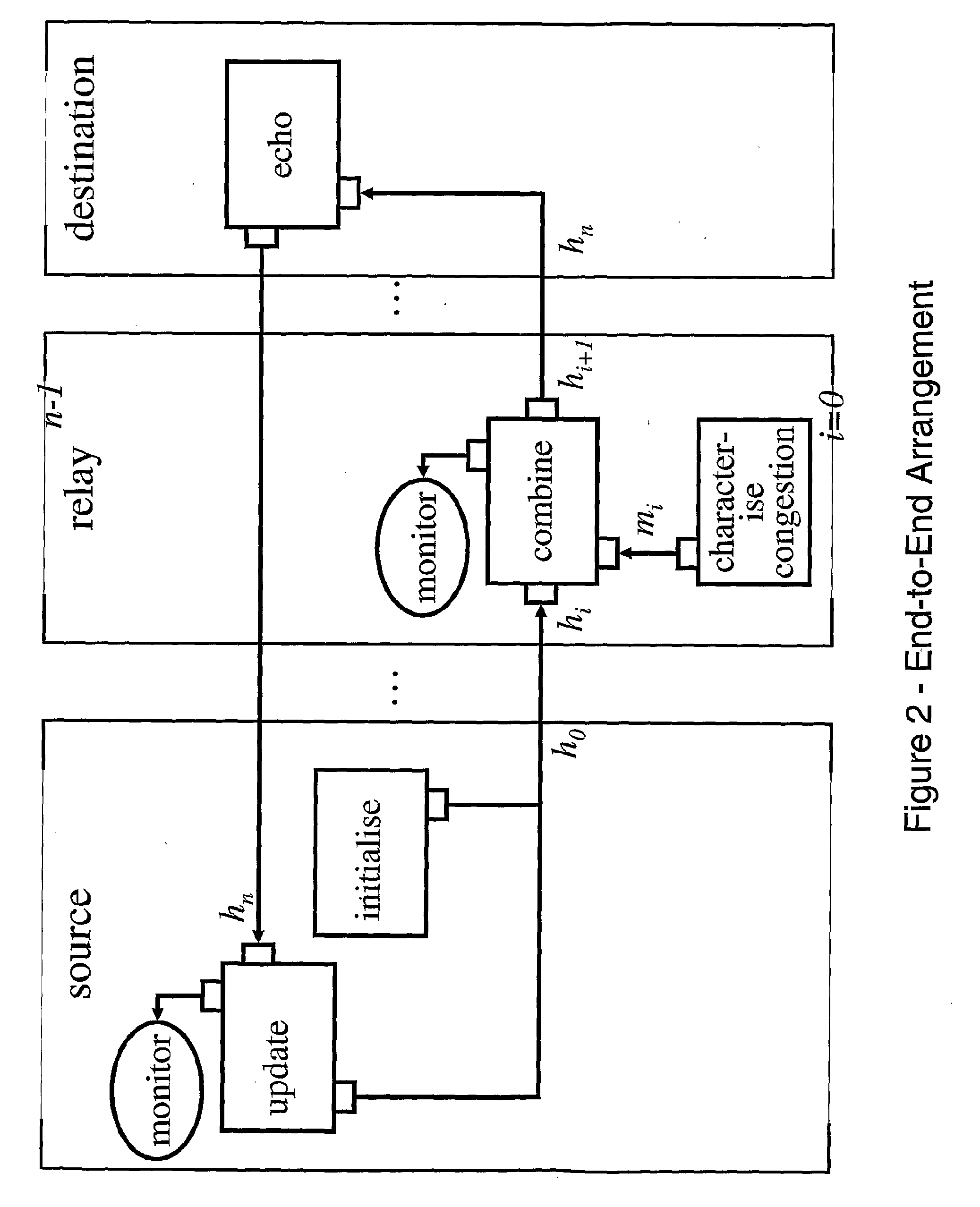Control of Data Flow in a Network
a data flow and network technology, applied in data switching networks, frequency-division multiplexes, instruments, etc., can solve the problems of increasing communication overhead, limited flexibility for changing length, and usually strict size limits in fields, so as to improve the effect of ecn
- Summary
- Abstract
- Description
- Claims
- Application Information
AI Technical Summary
Benefits of technology
Problems solved by technology
Method used
Image
Examples
implementation example # 1
Implementation Example #1
End to End TCP / IP with Re-ECN
End to End Arrangement
[0119]In general, re-feedback enables the network to signal to each node on a data path one or more characteristic metrics of the downstream path. Here we focus solely on congestion notification. FIG. 2 shows the arrangement of the main feedback-related functions of a general end to end arrangement of re-feedback. Relay 0 and the source may be the same node.
[0120]When the first packet of a new flow is generated, the source initiates the re-feedback signal. Then a three-stage feedback loop begins:[0121]each relay's contribution to the metric mi is combined with the re-feedback signal hi,[0122]the re-feedback signal at the destination hn, is echoed from the destination back to the source,[0123]the source updates the initial value of the re-feedback signal h0 in subsequent packets.
[0124]Furthermore any node on the path, including each end host, may monitor the value of the metrics, e.g. for adapting the data ra...
implementation example # 2
Implementation Example #2
Edge to Edge Guaranteed QoS Synthesis with Re-ECN
[0161]The Guaranteed QoS Synthesiser (without Re-ECN)
[0162]Guaranteed QoS Synthesis is a technology that enables network operators to provide per-flow guaranteed quality of service (QoS) to inelastic traffic across single or interconnected IP networks, with the simplicity but not the cost of over-provisioning. The guaranteed QoS synthesiser (GQS) has been described in a number of BT internal reports, but none are yet published.
[0163]GQS uses three standard Internet protocols, but all in a different arrangement to that in which they were originally designed:[0164]A reservation signalling protocol such as RSVP [RFC2205] is used, but in a scalable arrangement unlike the original Integrated Services Architecture [RFC1633];[0165]Differentiated services code points (DSCP) [RFC2474] are used, but not the complexity of service level agreement handling in the DiffServ architecture [RFC2475];[0166]Explicit congestion no...
implementation example # 3
Implementation Example #3
Generalised Superimposed Coding
[0190]Consider a multibit field of length N carrying information that can take any of R values. This leaves M=2N−R unused values that we can re-use in order to carry extra information.
[0191]In each packet, the flow is initialised at the source and possibly updated at each relay (for instance the downstream delay may be decremented), which constitutes the basic use of the field. An intermediate node can therefore monitor the dynamic evolution of the value coded in this field.
[0192]We propose to use some of the unused M values as alert (or “alarm”) codepoints so that, whenever needed the field is over-written with the alert codepoint (cf. the CE field in ECN). An intermediate node can monitor this and count the frequency of alerts in order to synthesise another path characteristic.
[0193]Re-ECN results from N=2, with the alert coded as CE. The source encodes the end-to-end congestion metric by setting the ECN field to ECT(0) in a ...
PUM
 Login to View More
Login to View More Abstract
Description
Claims
Application Information
 Login to View More
Login to View More - R&D
- Intellectual Property
- Life Sciences
- Materials
- Tech Scout
- Unparalleled Data Quality
- Higher Quality Content
- 60% Fewer Hallucinations
Browse by: Latest US Patents, China's latest patents, Technical Efficacy Thesaurus, Application Domain, Technology Topic, Popular Technical Reports.
© 2025 PatSnap. All rights reserved.Legal|Privacy policy|Modern Slavery Act Transparency Statement|Sitemap|About US| Contact US: help@patsnap.com



